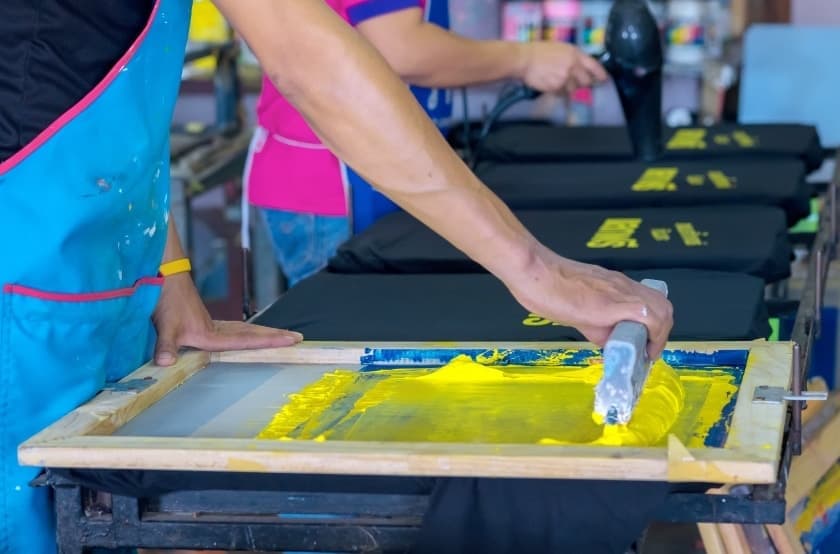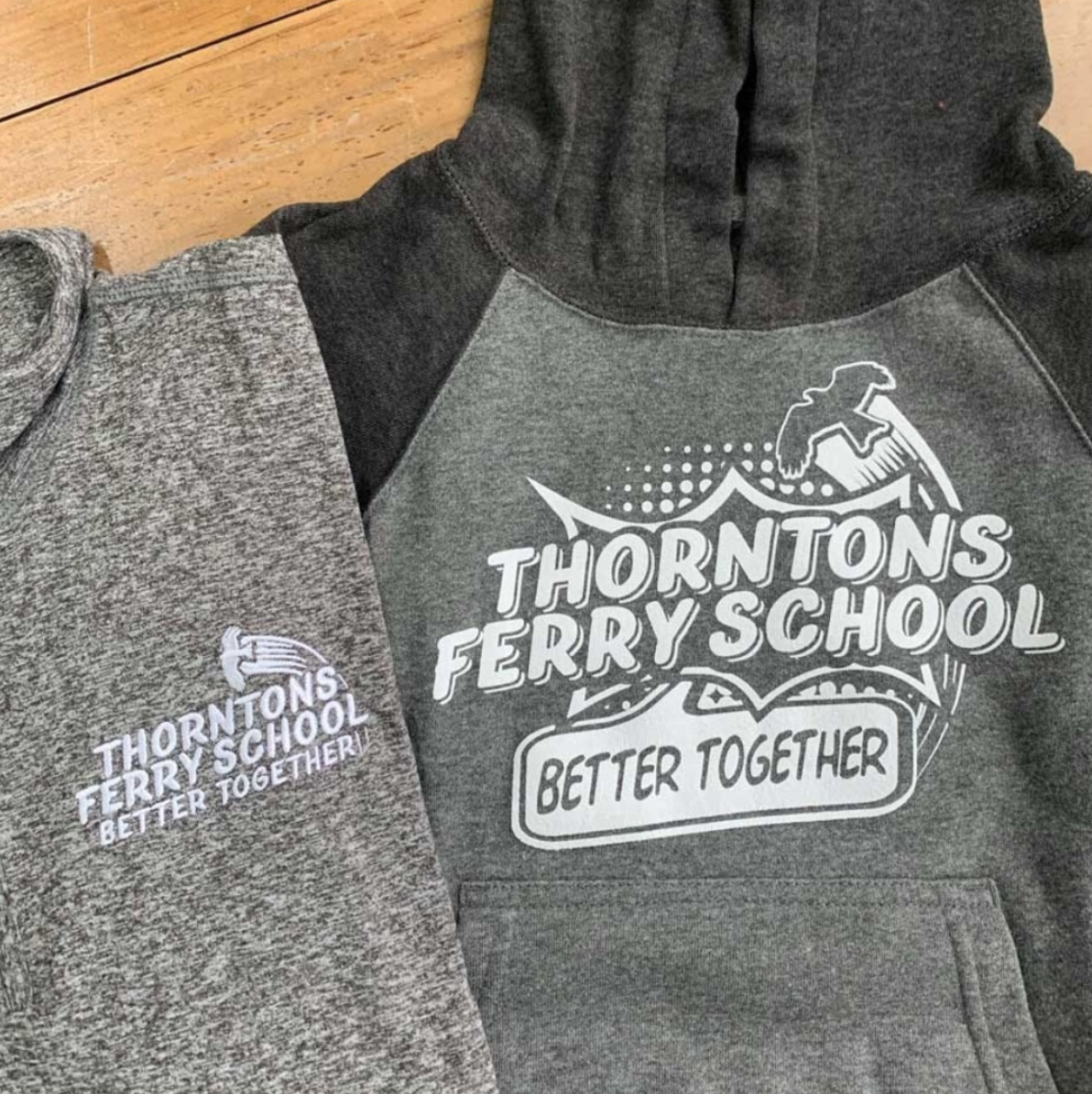Tx Tees for Beginners
Tx Tees for Beginners
Blog Article
Little Known Facts About Tx Tees.
Table of Contents5 Simple Techniques For Tx TeesThe 7-Minute Rule for Tx TeesTx Tees Things To Know Before You Get ThisTx Tees Fundamentals ExplainedAn Unbiased View of Tx TeesNot known Facts About Tx TeesTx Tees Things To Know Before You Buy
Add up various other prices, like the number of utilities it takes to run the store and the cost of ink and emulsion per layout. Take the print below.The emulsion must just be a few cents since you 'd only need to coat one display for this work. How much should you charge per tee shirt to make a revenue? Normally, printers attempt to make up to 45% profit on a print task. Below's a table to aid you identify that: complete price per thing percent of desired profit as a decimal (example:.25 or.45) revenue made per thing per work Currently allowed's discuss the productivity of DTF.

With DTF, you can publish a handful of t-shirts, or just one. Both display printing and DTF have their niches in the globe.
The Facts About Tx Tees Revealed
The very best method to recognize? Ask around and see what print shops like your own are doing. t-shirt printing. Attempt both out and see which you like far better
When you're choosing what sort of printing method to utilize for printing your artwork styles on your garments, it is necessary that you understand the distinctions in between these 2 techniques so you can maximize results while lessening prices. Display printing is one of the most generally made use of strategy for printing designs on fabrics.
DTG printing is also called spot or straight to garment printing because it publishes just what is required rather than making a screen as screen printers do. https://txtees02.mystrikingly.com/. Screen printing functions by display filler squeegee display printing ink screen mesh screen, after that transferring the photo to garment utilizing heat and/or stress
The DTG printer uses unique dye-sublimation inks that are applied into a pre-designed photo by an electronic printing system. The inks end up being component of the fabric, permitting lively colors and exceptional information. It's likewise referred to as area or direct to garment printing due to the fact that it prints only what is needed rather of making a screen as display printers do.
Tx Tees Fundamentals Explained
First, it's much faster - you can print a fullcolor photo in minutes, rather than hours for display printing. Second, there's no established up time or prices included - you can publish any design you like, without having to produce a display initially. Third, there's no waste - since screen printers display print one design at once, they need to evaluate each color independently.
The paper is extremely costly and can only be utilized when. Once it's printed on, it needs to be disposed of. - The preliminary purchase price is less than the ahead of time financial investment of DTG printers- You can publish multi-color styles one display each time instead of having to print each shade independently like DTG printing.

The 10-Second Trick For Tx Tees
Rather of using screen mesh as display printers do, color sublimation printers use laser modern technology to move your photos onto garments or paper. A heat process transfers the dye from its solid-state directly right into the gas stage which subsequently fuses it onto material substrates when they are swiftly warmed to high temperatures under high pressure.
Sublimation printing is environment-friendly. It uses less water than screenprinting, and since it does not entail the usage of dangerous solvents, it's secure for all types of apparel. The dye sublimation inks are additionally odor free when treated, unlike screen printers that utilize dangerous chemicals throughout the screen printing process that leave an undesirable smell.
They also save money on costly equipment like exposure devices since color sublimation printers do not call for a UV exposure system or a flash treatment stove that is commonly utilized in screen printing (custom monograming). What is direct to garment printing (DTG Printing)? DTG printing is a digital screenprinting process that prints straight onto material utilizing specialized inkjet printers
A Biased View of Tx Tees
DTG printing offers lots of benefits over traditional screenprinting, consisting of the capability to publish photographic high quality images, better color vibrancy, and the capacity to print designs on darker materials. DTG printers work by warming the textile ink until it becomes a gas. The gas after that permeates the fabric, bonding with the fibers to create an irreversible print.

Display printers merely prepare their display after that begin publishing up until they run out of product or ink.- There is a wide variety of skilled screen printers around the globe, which can be practical for novices. - It's a slower process - screen printers usually need to await the ink to completely dry before they can publish the following color- Display printers need manual work, so there's a greater discovering curve and it takes longer to generate a top quality design- Display printing isn't as precise as DTG printing, so you may get some "bleeding" of shades from one part of the photo onto another if not done correctly.
The Ultimate Guide To Tx Tees
Nevertheless, as opposed to using display mesh as screen printers do, dye sublimation printers make use of laser innovation to move your images onto garments or paper. A warmth process transfers the color from its solid-state directly into the gas stage which subsequently fuses it onto fabric substratums when they are rapidly heated to heats under high stress.
Sublimation printing is environmentally friendly. It uses less water than screenprinting, and due to the fact that it doesn't involve the usage of dangerous solvents, it's safe for all kinds of garments. The color sublimation inks are also odor-free when cured, unlike display printers that make use of harmful helpful resources chemicals during the screen printing procedure that leave behind an undesirable smell.
They also save money on pricey devices like exposure systems given that dye sublimation printers don't need a UV direct exposure device or a flash cure oven that is usually utilized in screen printing. What is straight to garment printing (DTG Printing)? DTG printing is an electronic screenprinting procedure that publishes directly onto textile utilizing specialized inkjet printers.
All About Tx Tees
DTG printing provides numerous benefits over traditional screenprinting, consisting of the capacity to publish photographic high quality images, greater shade vibrancy, and the capability to print layouts on darker textiles. DTG printers work by heating the fabric ink till it develops into a gas. The gas after that permeates the fabric, bonding with the fibers to develop an irreversible print.
Report this page